© 2017 - All Rights Reserved
Here are some pictures from 2017. Just so you know there is all kinds of great stuff to see.
It's just that I can't get good photos of it. These are mostly docu-grab-shots.
They are the photos used for the weekly breaks on the bird news page in 2017, in reverse
chronological order (last break in Dec. at top-start; first in Jan. at bottom-end).
A camera change occurred after mid-year, starting with the Purple Martin photo pix are
taken with a Canon Powershot SX40, prior are pixel paintings with a Sony Mavica.
Quick links to the last few years ...
2015 pix
2016 pix
2018 pix
2019 pix
2020 pix
2021 pix
2022 pix
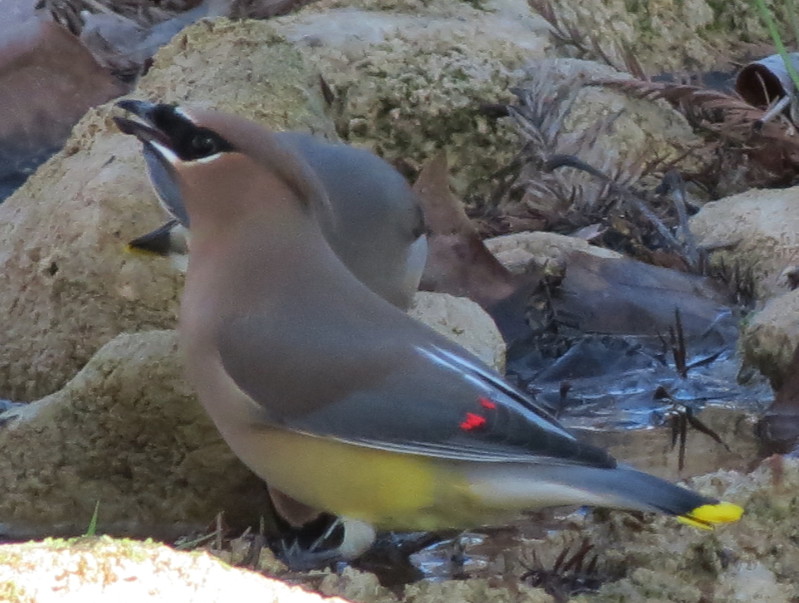
Cedar Waxwing
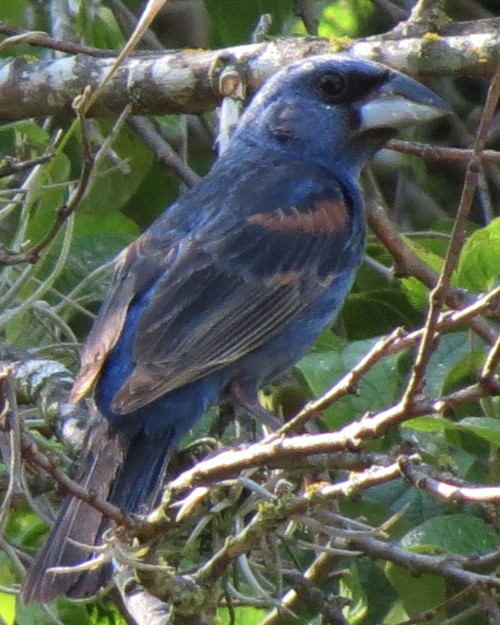
Blue Grosbeak - male
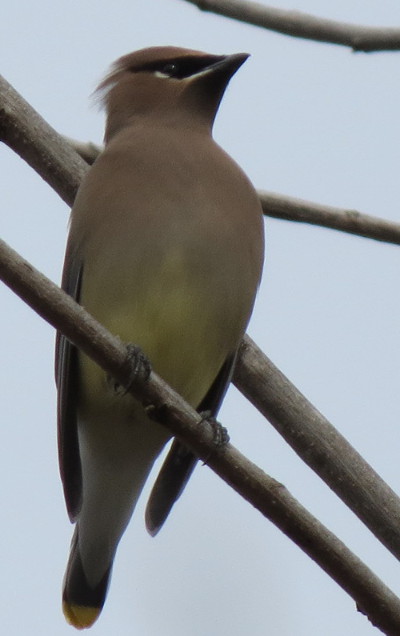
Cedar Waxwing
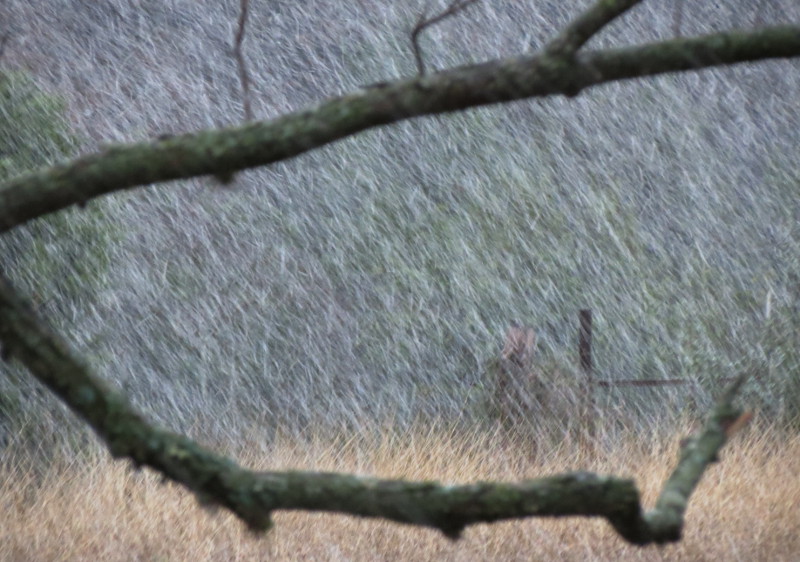
The great blizzard of 2016, on Dec. 7, was 15 minutes like this, and 15 lighter.
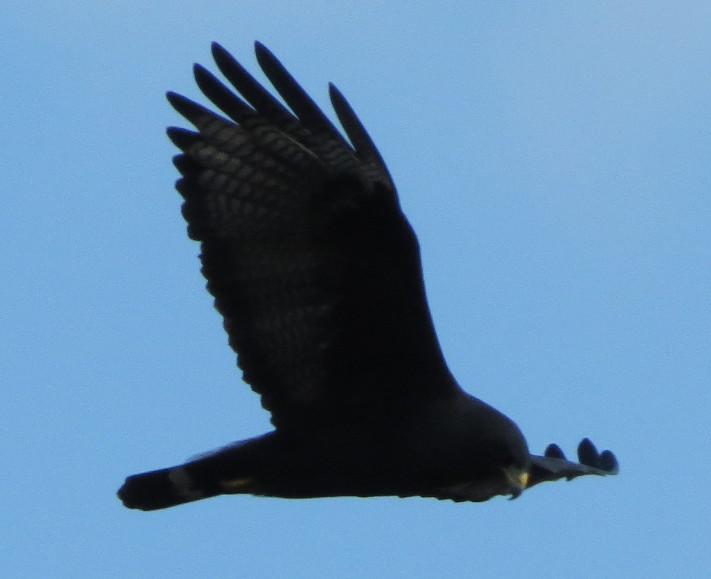
Zone-tailed Hawk

Man, they got it all in Utopia, even aquatic bats.
This is the Red Bat I watched plop into the river a few months ago.
Pulled it out and left it on shore... Bat rescue, how may we help you?

Filigree Skimmer (dragonfly) - check out those eyes!
I want sunglasses that look like that! You'd be
the coolest one at the dragonfly society meeting.

Thornbush Dasher
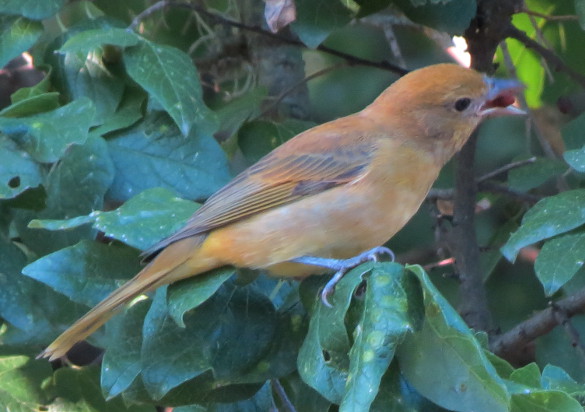
Summer Tanager, female working on a hackberry
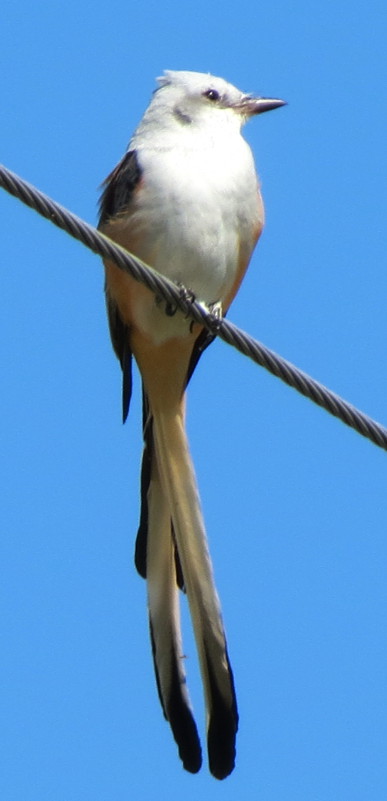
Scissor-tailed Flycatcher, male. Note the tail is in
the 'scissor' position with the sides crossed
just below the base of the tail.
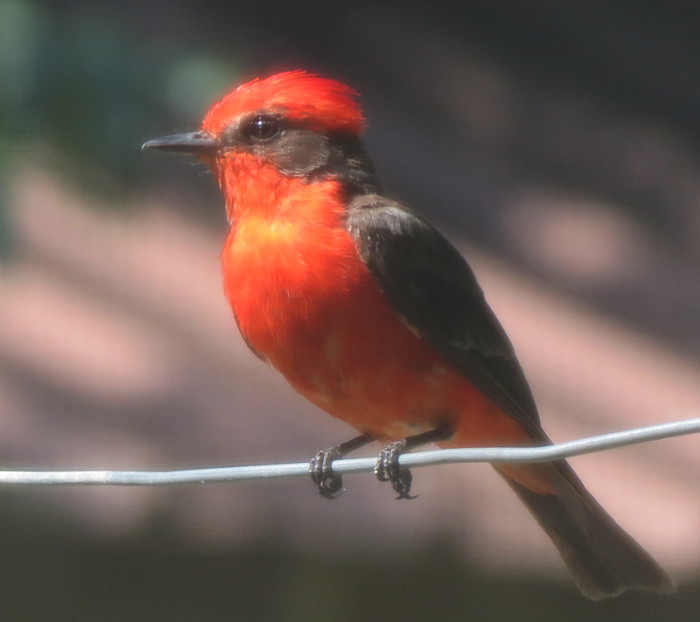
Vermilion Flycatcher
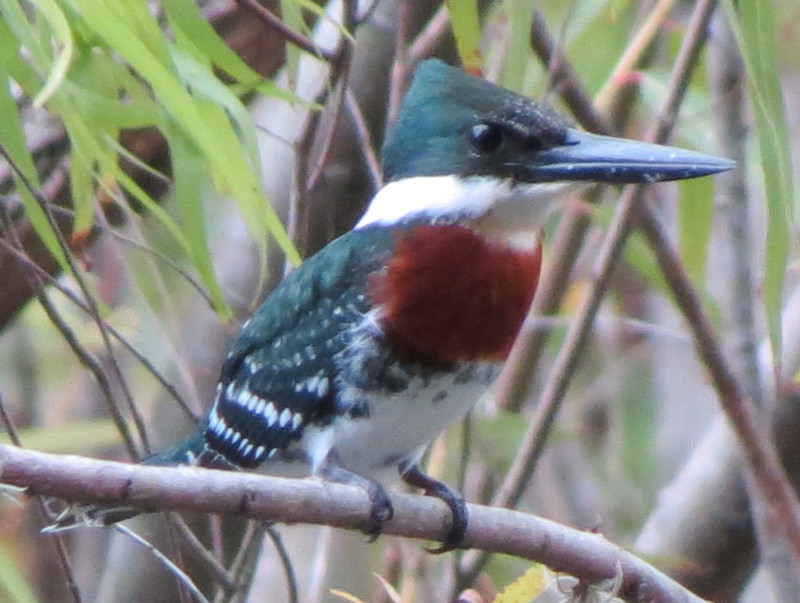
Male Green Kingfisher at Utopia Park
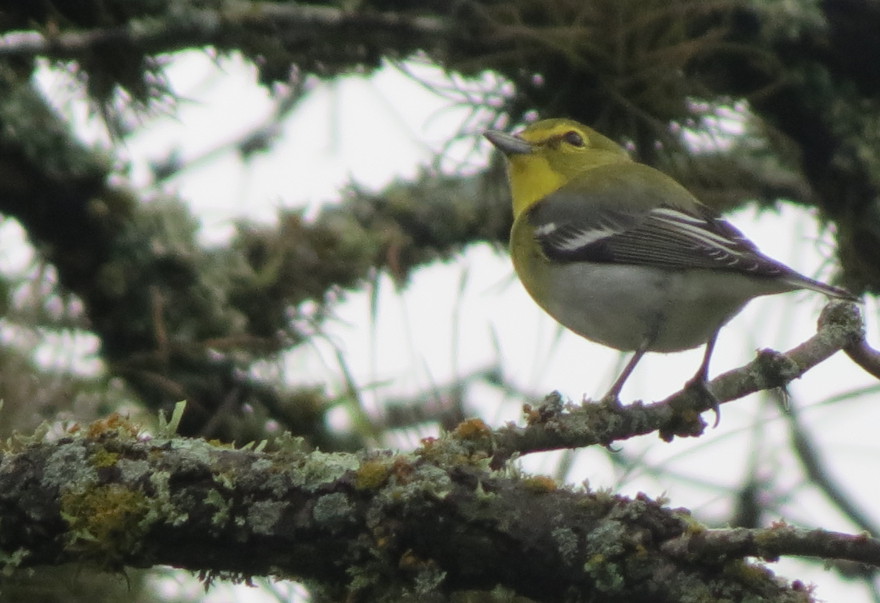
I love this lichen on the branch... and oh yeah, a
Yellow-throated Vireo in fresh plumage on Sept. 28.
Yeah I know bad light, but as often as not, that is
how we see birds. Anyone can ID them in good light.

Eastern Tiger Swallowtail on Buttonbush

I am bark. I love trees. Bewick's Wren hugging a tree.
I have seen them do this when a predator was present (hiding), and when not,
whence I wonder if they are listening for critters in crevices.
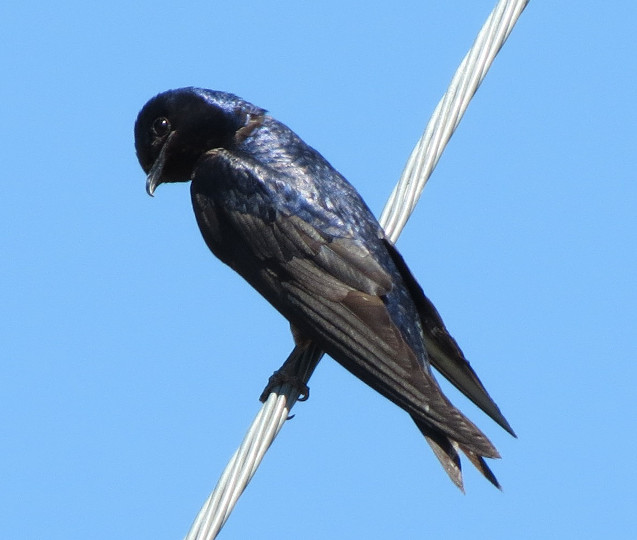
Male Purple Martin is a beauty, that calls "beer, beer". What's not to like?
~ ~ ~ from above and on shot with Canon Powershot SX40 ~ ~ ~
~ ~ ~ most prior pixels with Sony Mavica (floppy disk) ~ ~ ~

One of the Catocala Underwing moths we have locally, probably C. obscura, or something similar. They are nearly invisible on tree bark. Some types have striking red, pink, or orange and black banded hindwings you see when they explode off a tree trunk, and names like Darling, Sweetheart, and Girlfriend. This is our most numerous one though, with dull boring brown hindwings you can just see the corners of.

One of our neat local friends, a Spotted Skunk

I have not ID'd this yet, being botanically challenged.
Was at Lost Maples in late May, and a beauty it is.

One of the Black Rock Squirrel at Lost Maples.
They are a ground squirrel, though rarely you
may see one up in a tree. If the food is there.
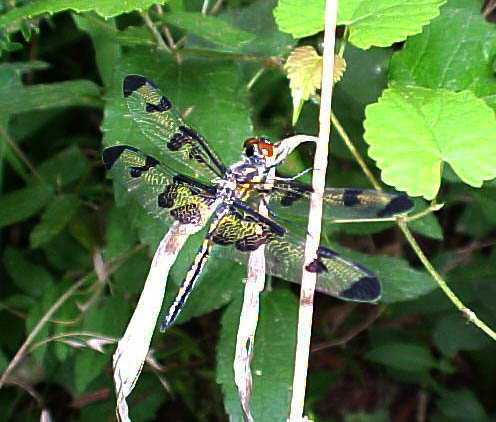
A teneral (just emerged) Banded Pennant dragonfly
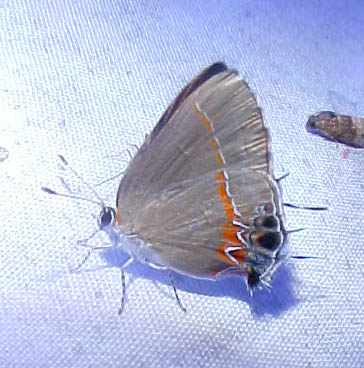
One of five Dusky-blue Groundstreak that came
into a nightlight for bugs after dark June 23.
Sometimes butterflies are attracted to lights at night.

This methinks is a Neoclytus sps. (c.f. mucronatus) Cerambycid.
One of the many Longhorn Beetles we have here.

This is a Violet (formerly Variable) Dancer.
(Pretty sure this was taken with the Canon SX40)

This is an Amblyscrites (Roadside-Skipper) of some sort.
I think that is Texas Milkweed it is nectaring on.
Lost Maples SNA, May 29, 2017

I think this is a velvet worm. They look like a slug,
but are dry with no mucous, except a scant trail, and
they look remarkably like velvet.

A fancy Ironclad Beetle (family Tenebrionidae), most are just black.
They can bend mere mortal insect pins in case you wondered.
I believe this is Zopherus haldemani or something similar.

Damselfly - Springwater Dancer (Argia plana) at Lost Maples May 29.

One of the White-tipped Dove at Lost Maples this spring,
this at the feeding station, and which are surely breeding.

Texas Spiny Lizard (Sceloporus olivaceous).

This is the answer to last week's photo quiz.
Taken through a window and a screen from the office.

This is a photo quiz for those guys that put up the
ID quiz photos with one obscure mark barely showing.
Something like the bifurcated scutes on the metatarsals.
So for you guys. Take this! Hint for the rest: mammal.
Now what do you wanna bet one of those smart alecs
will e-mail me with the correct ID. I tried to shoot it
with flash but too far so mostly just got some eyeshine.
Probably ID-able though.

Here is the north end of a south-facing Pine Warbler,
the male that wintered and is presumably a returnee
visiting the yard regularly for at least 3 winters now.

Mudbug if you are in cajun country, Crawdad in
most places, or Crayfish to be most accurate.
Barred Owl and Red-shouldered Hawk seem particularly
fond of them. I once knew some Pied-billed Grebes
that lived on them.

Here is the Texan Crescent we saw at the park in
late January, probably my first ever in Jan., and
obviously a mint fresh individual.

Carolina Wren, which does not have spotted wings.
They have a spotted lower back, which you will hardly
ever see. This cold one has its wings tucked up tight,
and under its back feathers which are draped over the
wing, making it superficially appear as though the
wing is spotted. It pays to know all the parts.
The Sibley Guide is the one book in which I have
seen this character this well-illustrated.

This is a Nysa Roadside-Skipper from a couple years ago

Here is another example of how red a male House Finch
can be here. Ross Silcock of Nebraska took this photo
at Lost Maples in February. We have a similar bird here
in yard among a couple dozen. Note the extent of the red on
underparts, for which one gets no idea can occur from
the field guides. Thanks for letting us share the pic Ross!


The top photo is the business end of the Spotted Skunk that is around the house a bit. Sometimes in the shed! I hope you appreciate how brave I was to get these photos. Of course had I gotten sprayed it would have been how stupid I was. Funny how results have great bearing on our perception of actions. The yellowish circle on right photo is the flashlight beam, oops and sorry. Trying to get autofocus to focus...

Black Rock Squirrel is a terrestrial (ground) squirrel
rather than an arboreal (tree living) type like Fox Squirrel.
Though rarely you might find one up in a tree.
(Taken through old grayed window and screen)

Western Ribbonsnake. It is one of the Gartersnake group.
The dorsal stripe can be cream, yellow, orange, or even red!
I saw a stunning red one off of S. Thunder Creek Rd. once.
Most here look like this one.

This Anole took this Pipevine Swallowtail right off
a flower. Pipevines are alleged to be distasteful,
like Monarchs due to what the caterpillar eats,
Pipevines. Unfortunately I couldn't follow the
lizard for a day or two to ask it if it got indigestion.
It took hours but it worked the wings off and ate it.

Probably the same adult male Pine Warbler here now,
this pic taken a couple winters ago on the patio.

There was a bit of an invasion of White-tipped Black
moths this past fall. They are LTA - less than annual, here.
Neat how I cut off one of the white tips on the White-tip.
Call for free tips on how to screw up photos...

Hey can you pick those leaves off that for me?
Porcupine gets a bit ratty during late-summer shed.
They drink like dillos, ten minutes at a sitting.

This is one of our dependents on the sunflower feeder.
It is not unusual for a male to have some red feathers
in the orange nape patch. (Golden-fronted Woodpecker)

Just to give an idea, here is a pic showing part of the yard, house and cottage, so you can get an idea of where much of the stuff being written about is being seen. This pic was May 2013, barely two months after we moved into this place. Now there are butterfly flowers around the porch. Yard lists are: about 40 species of odes (dragons), over 85 sps. of butterflies, 7 sps. of frogs & toads, 7 sps. of lizards, 20 sps. of native mammals, about 100 sps. of plants (mostly wildflowers), and at the 4 year point, about 215+ species of birds.
~ ~ ~
Quick links to the last few years ...
2015 pix
2016 pix
2017 pix
2018 pix
2019 pix
2020 pix
2021 pix
2022 pix
If you have arrived here from our Bird Photos page, you may close your browser to return to the Bird Photos index.
Other visitors may click your "Back" button on your browser or select a link to keep visiting!

To Bird Photo Main Menu

To Butterfly Pics

To Dragonfly & Damselfly Pics

To Current Bird News
Birds
Utopia Birds
Birding Sites
Bird List
Bird Guide
Reports from Lost Maples
Winter Bird Count
Butterflies
Butterfly News
Butterfly List
Butterfly Photos
Rare Butterflies
Dragonflies
Critters, Bugs, & Stuff
Lost Maples
Garner State Park
Local Site Guide
Home

Our E-mail
mitch @ utopianature.com
 All photographs within this site are copyrighted
All photographs within this site are copyrighted